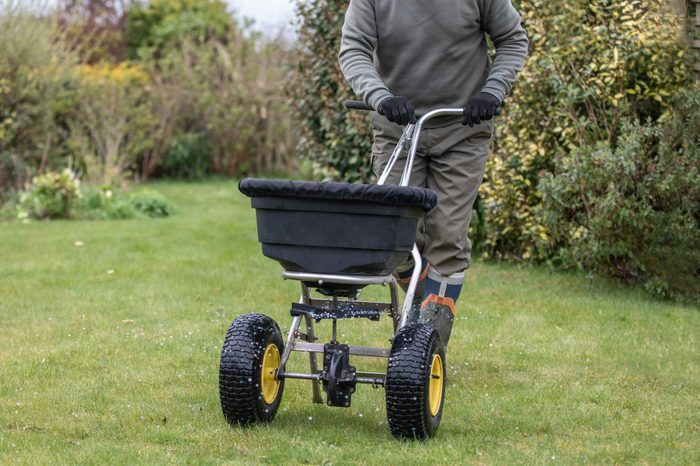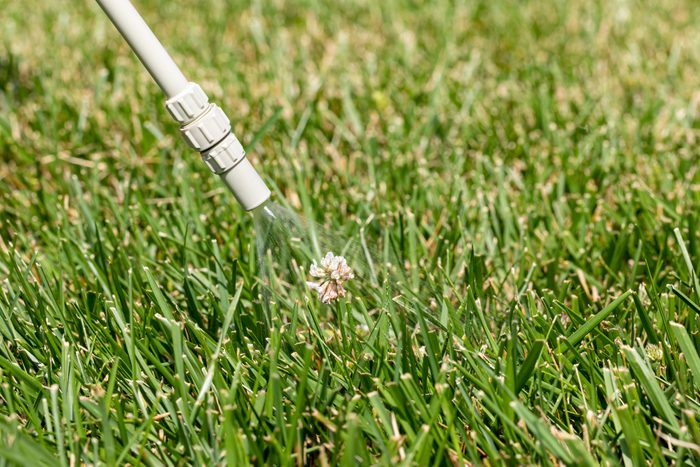Along with the dreaded dandelion, white clover mars many lawn-covered landscapes. It's not that difficult to get rid of. It just seems like it is!
How to Get Rid of Clover in Lawn

What Does Clover Look Like?
A typical clover plant has leaves made up of three oval leaflets about 1/4 to 1/4 inch in diameter. Looking closely, you’ll see that each leaflet has a white or light-green inverted V-shaped pattern known as a “watermark.”
Like a few other lawn weeds, white clover produces stolons, or above-ground runners, that help it spread, forming patches in a lawn, ball field or golf course fairway. White to pinkish-white flowers form during late spring and into the summer months which makes clover patches easy to see. Many of us enjoy their beauty and sweet, fragrant smell.

Why Do I Have White Clover in My Lawn?
Many weeds are “indicator plants,” meaning they are in your lawn for a reason. All weeds are opportunistic. They show up on your lawn when environmental factors favor their growth. Here are a couple factors that might be contributing to their growth.
The lawn is underfed
Having prolific clumps of white clover in your lawn probably means it’s underfed. Once you rid your lawn of clover, fertilizing two or three times yearly should keep it clover-free. If you have a low-maintenance lawn, good for you! A little bit of clover sprinkled in adds diversity and is a good food source for pollinators.
A little-known fact: White clover is a legume. That means it fixes atmospheric nitrogen and converts it into a plant-available source. In short, it fertilizes itself. That’s why a patch of clover always looks so disgustingly healthy in an otherwise bad-looking lawn.
Compacted soil
Heavily compacted soil can also cause clover to creep in. The same goes for other broadleaf weeds such as knotweed, dandelions and plantain. Core aerating your lawn each year will relieve soil compaction and will go a long way in keeping your lawn clover-free.
Too-short grass
Raising your mowing height will help keep white clover in check as well. Grass mowed at a higher height will be healthier and can better compete with clover and other weeds.

How Do I Get Rid of White Clover in My Lawn?
White clover is virtually impossible to pull by hand. Taking the necessary steps to create a healthy lawn is a great first step to keep it weed-free.
A herbicide application is your best bet to remove clover from your yard. Using a quality 3-way herbicide containing 2,4-D, MCPP and Dicamba will do a good job. Using herbicides that contain sulfentrazone, carfentrazone, fluroxypyr, quinclorac or triclopyr will give you even better results. Stay away from using straight 2,4-D. It won’t do the job.
As always, read the label and directions for use on all lawn care chemicals before using to avoid unintentionally killing something other than Clover or harming the environment.




















